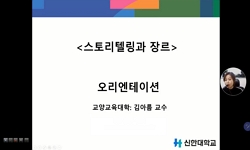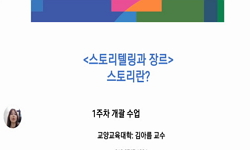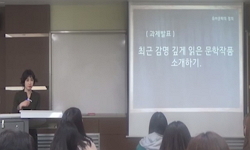조선의 漢文戱曲 3종 『東廂記』, 『北廂記』, 『百祥樓記』는 중국희곡의 체제에 조선의 인물과 사건을 담아 지었다. 중국희곡은 唱科白 3요소로 구성되며, 刊本과 寫本에는 부호를 사용하...
http://chineseinput.net/에서 pinyin(병음)방식으로 중국어를 변환할 수 있습니다.
변환된 중국어를 복사하여 사용하시면 됩니다.
- 中文 을 입력하시려면 zhongwen을 입력하시고 space를누르시면됩니다.
- 北京 을 입력하시려면 beijing을 입력하시고 space를 누르시면 됩니다.

조선 한문극본(漢文劇本)의 필사체제(筆寫體制)와 장르 특성 = On The Writing Formation and Genre Identity of Dramas written in Chinese During Choson Dynasty
한글로보기https://www.riss.kr/link?id=A105034224
- 저자
- 발행기관
- 학술지명
- 권호사항
-
발행연도
2017
-
작성언어
Korean
- 주제어
-
등재정보
KCI등재
-
자료형태
학술저널
-
수록면
201-235(35쪽)
- DOI식별코드
- 제공처
- 소장기관
-
0
상세조회 -
0
다운로드
부가정보
국문 초록 (Abstract)
조선의 漢文戱曲 3종 『東廂記』, 『北廂記』, 『百祥樓記』는 중국희곡의 체제에 조선의 인물과 사건을 담아 지었다. 중국희곡은 唱科白 3요소로 구성되며, 刊本과 寫本에는 부호를 사용하거나 글자 형태를 달리하는 등의 방법으로 이 삼자를 분명히 구분한다. 조선 한문극본의 사본도 창과백을 구분하기에 문제는 없으나 科와 白에는 非劇的인 색채가 다분하다. 묘사적이고 서술적인 科와 白은 소설이나 講唱의 기법으로서 연극예술이 발달하지 않았던 조선의 문예 상황을 반영하는 것이다. 즉 무대에서 상연할 수가 없었기 때문에 초래된 현상으로 보이는 것이다.
『백상루기』는 극의 본문인 唱科白과 그에 대한 評語가 섞여 있다. 이는 金聖歎의 『第六才子書西廂記』의 체제를 따른 것으로서, 일부 평어는 본문의 기능을 대신하여 극의 상황을 부연하여 전달한다. 또한 각 折 뒤 「總評」의 작자는 바로 『백상루기』의 작자이다. 이런 점들을 고려하면 『백상루기』의 본문과 평어는 동일인이 작성하였다고 간주할 수 있다. 극작가가 해설자의 역할을 겸하여 극 작품의 안팎을 자유로이 드나들며 작품의 내용을 독자(관객)에게 전달한다.
따라서 조선 한문희곡은 모두 본질적으로는 무대 상연을 전제하는 희곡이지만, 실제로는 講唱이나 상연되지 않는 소설의 성격을 겸하고 있다. 또한 『백상루기』는 작품의 본문과 평어가 잘 어울려 하나의 작품을 구성하는 새로운 창작의 방식으로 자리를 매겨 줄 수도 있다.
다국어 초록 (Multilingual Abstract)
The three types of Choson's Classical Chinese Drama include, Dongsanggi, Buksanggi, and Baiksanglugi, which were adopted from the Chinese Drama formation. Chinese Drama is composed of three elements, that are songs, movements, and dialogues. Such thre...
The three types of Choson's Classical Chinese Drama include, Dongsanggi, Buksanggi, and Baiksanglugi, which were adopted from the Chinese Drama formation. Chinese Drama is composed of three elements, that are songs, movements, and dialogues. Such three elements are clearly distinguished by using signs or differentiated forms of letters, in the printed versions and the scripts. Also in the case of the scripts of Choson Classical Chinese Drama, it is unproblematic to distinguish among the three elements, however, its movements and dialogues are rich in non-dramatic colors. Descriptive and narrative motion directives and dialogues reflect the literary situation of Choson, where Drama Art was undeveloped. That is, it appears to be a phenomenon caused by the inability to stage the performance.
In Baiksanglugi, there are critical remarks mixed in between the textual contexts of the drama. This follows the system of Diliucaizishu Xixiangji of Jin Shengtan, where some of the critical remarks replace the functions of the text and convey the situation of the drama instead. In addition, the author of the general review(總評), which follows after each act, is the also the author of Baiksanglugi. Considering such aspects, it can be assumed that Baiksanglugi's texts and general review are both written by the same author. Through combining its role also as a narrator, the playwright freely goes in and out of the drama and delivers contents of the work to the readers(audience).
Therefore, all the Classical Chinese Drama of Choson are basically dramas that presuppose stage performance, but are those which also possess the character of a novel or a storytelling genre that are not staged in reality. Moreover, the harmony of text and critical remarks of the work can be settled in as a new method for creating a piece of work.
동일학술지(권/호) 다른 논문
-
『리학지남(吏學指南)』의 몇 가지 쟁점(爭點) 검토(檢討)
- 성균관대학교 대동문화연구원
- 박영록 ( Park Young-rok )
- 2017
- KCI등재
-
동아시아 표류서사(漂流敍事) 서설(序說) ― 동아시아 해양문화의 단서(端緖)로써
- 성균관대학교 대동문화연구원
- 정환국 ( Jung Hwan-kuk )
- 2017
- KCI등재
-
16세기 조선 대명(對明) 사행무역(使行貿易)의 수출품 구성과 그 추이
- 성균관대학교 대동문화연구원
- 구도영 ( Koo Do-young )
- 2017
- KCI등재
-
조선후기 『고문상서(古文尙書)』 논변과 주이존(朱彛尊)의 영향
- 성균관대학교 대동문화연구원
- 신재식 ( Shin Jae-sik )
- 2017
- KCI등재




 KCI
KCI KISS
KISS







